Dolce & Gabbana’s high-jewellery extravaganza
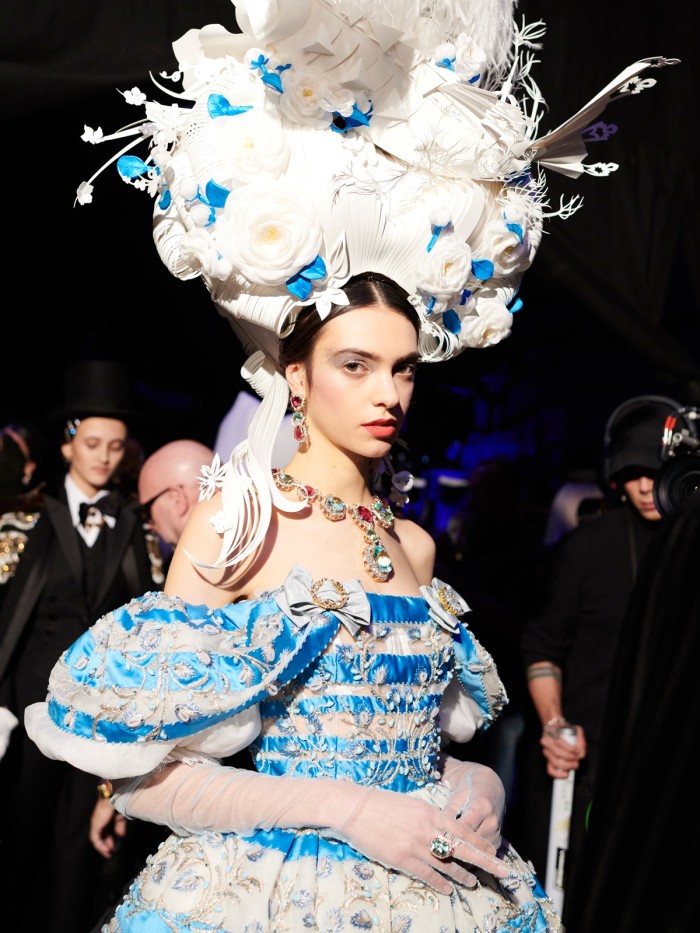
Roula Khalaf, Editor of the FT, selects her favourite stories in this weekly newsletter.
It’s a wet and blustery day in November. In the high‑jewellery workshop of Dolce & Gabbana, minutes from the centre of Milan, 40 or so goldsmiths and jewellers in couture-made white lab coats are silently hunched over their benches, so engrossed in rhythmic, intricate movements on metal and gemstone that they’re oblivious to the driving rain. Or indeed the hour of the day. Here, it’s not unheard of to sleep over in the workshop.
Walter Veneruz, director of jewellery and watches, explains the room’s quiet intensity by numbers. There are 20 days until the Alta Gioielleria show in Milan’s Palazzo Clerici, and of the 50 high-jewellery drawings pinned to the wall, only half are complete. Added to which, 30 costume pieces – showy rose headpieces, crowns and corsets hand-crafted in brass and layered with gold plate – need finishing.
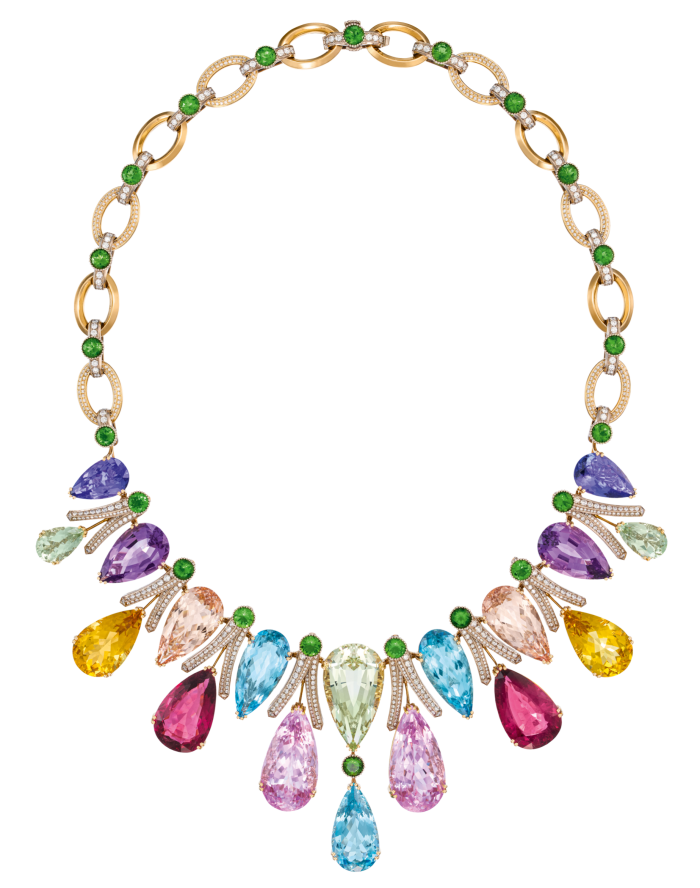
Given the circumstances, Veneruz looks remarkably relaxed. The astonishing detail and the techniques on show here – from fine filigree work to the cutting of cherry rubellites or large Colombian emeralds, to the development of a unique alloy with a warm, pinkish-gold hue and a new vibrant enamel that can’t be scratched – aren’t typical for a fashion house. Most jewellery maisons don’t throw precious conformity to the wind with flamboyant creations such as these, nor work to this kind of deadline. “Stress?” he shrugs. “We’re used to it.”
Next door in the gemmological office, he opens a vast safe (rooted on a rubber floor in case anything precious falls) to pull out boxes of intensely coloured gemstones arranged in the shape of the jewellery they will become. One exceptional plum-sized 75ct Paraíba tourmaline named Oceanina is the new passion of Stefano Gabbana and Domenico Dolce; other suites will blaze with 100 carats of neon-bright Madagascan pink tourmalines or a sequence of graduated natural yellow sapphires. Since 2012, when “the designers” – as everyone here refers to the duo – added Alta Gioielleria to their repertoire, astute Veneruz has learnt that the only constant is change, so these won’t be set until the last minute.
Even then, tricky adjustments to the unyielding materials might have to be made, following final fittings with the Alta Moda couture gowns a week before the show. “They’re used to 100 tailors making alterations to the clothes,” sighs Veneruz. “But we try.” Just in time, the sumptuous Paraíba tourmaline becomes the centre stone of an extravagant Hollywood-style necklace – think Elizabeth Taylor – and survives the fitting without adjustment. “It’s my favourite piece,” Domenico Dolce tells me excitedly over the phone afterwards. “I love it when jewellery is ‘borderline’; when it’s so strong you’re not sure if it’s real or bijou.”
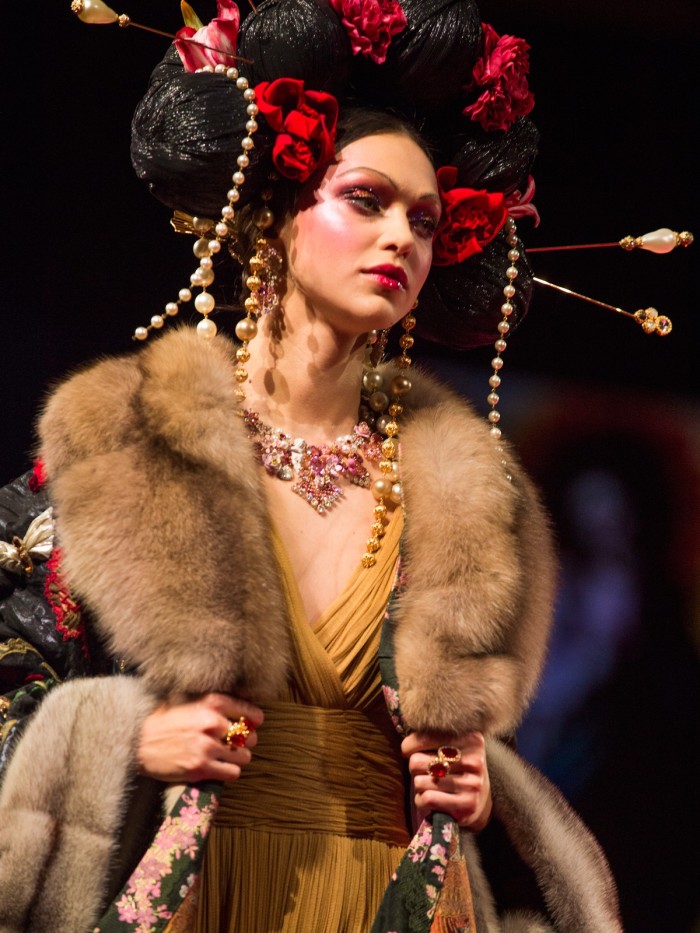
Although Dolce compares the new stone shades to the sugary marzipan, pink, yellow and pistachio green of Cassata Siciliana ice cream, this season’s primary inspiration is Tiepolo Pink, as featured on the ceiling of Palazzo Clerici’s main gallery, painted by the 18th-century Venetian Giambattista Tiepolo. “I love this roof absolutely,” Dolce says, “and for me, pink or fuchsia is the master colour for the woman because it’s feminine, feminine, feminine.”
The jewels will be a tribute to the palazzo, highlighting the rococo blood-flushed tones used by Tiepolo on the nymphs, mythological figures and Olympic deities that float across a sky streaked with pink and white clouds. Hence the proliferation of “rosa” gemstones sourced recently by Veneruz with gemmologist Loredana Sangiovanni. Pastel-pink morganite, lavender-dappled kunzite, magenta sapphires and even opaque rose quartz – which the house hasn’t used before in high jewellery – will become elaborate baroque-style suites of blush-pink magnolia, hydrangea and camellia necklaces and earrings.
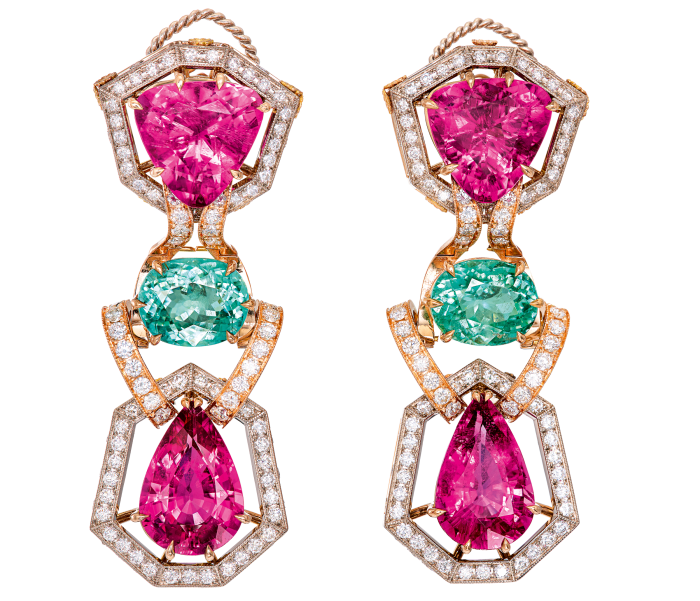
Unusually, there are no Sicilian flowers in this collection. Dolce’s beloved Mediterranean birthplace, which sparkles with a strong Byzantine jewellery culture as well as a mash-up of motifs left over from civilisations that once dominated the island – from ancient Greek and Roman to Arabic and Spanish – is often revisited as stimulus. “Our culture is that jewellery holds the memory of the family story,” Dolce explains. “It’s passed down through generations, so it speaks to our history.” It’s a sentiment that informs the house’s designs: “We don’t care about value or price; what’s impressive to us is the hereditary possibilities, and that our jewellery is beautiful and has emotion.” They love playing with the unexpected – necklaces that glint with disparate references: sacred crosses; angels; the Madonna and rosary beads jostling with superstitious symbols such as lucky clovers, horseshoes and the Neapolitan horn that wards against evil.
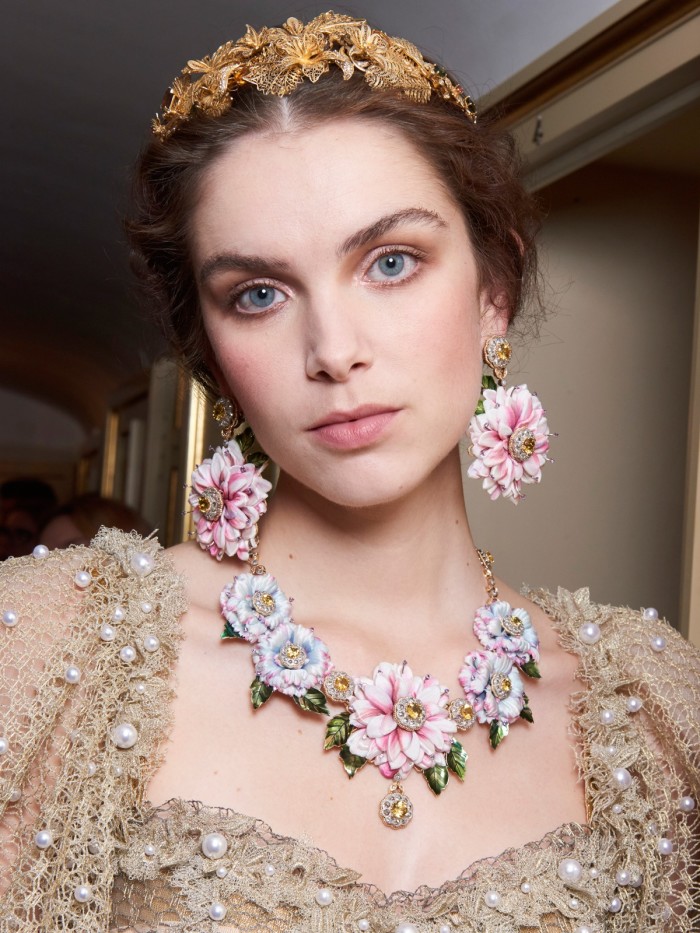
Essentially Dolce and Gabbana are jewellery anarchists: they break rules. Who knew that carved coral roses, translucent gems, pearls and antique miniature Venetian watercolours, framed by pink diamonds, could coalesce in a necklace, as if they always belonged together? Or that earrings could contain a double layer of lace: Pizzo Chiaccherino Sicilian embroidery atop a delicate gold filigree? At the beginning, this creative alchemy surprised the classically trained Veneruz. “They put everything together in such a strange way, using 19th-century coral with blue zircon, for example,” he recalls. “But in the end, it’s always so beautiful – and then we understand it. You have to have a free mind to do that.” Sangiovanni pops her head around the door. Hold the rose quartz. Too much like velvet. “The designers” want to change to pink tourmalines.
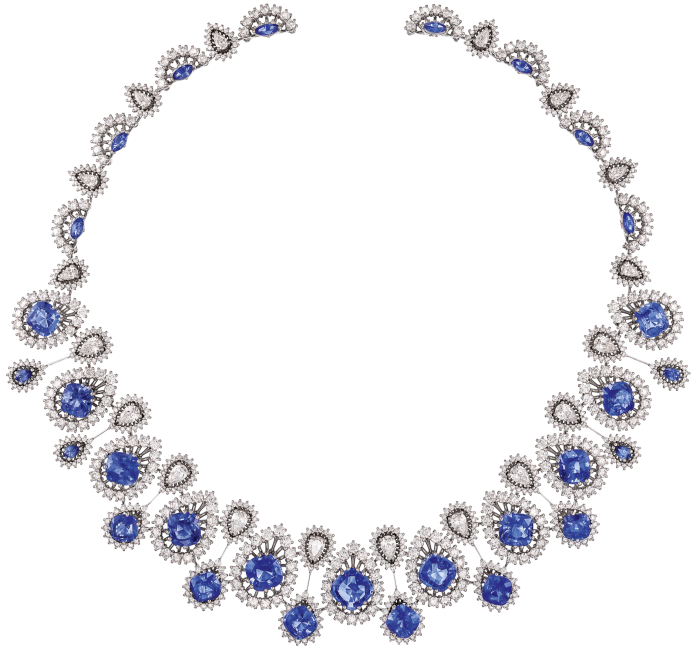
Back in the casting room, gold is polished until it resembles silk, and 20,000 stones – the majority of which are coloured – will be tweezed into the golden skeletons of the new collection. Around 200 of these one-of-a-kind high-jewellery pieces are produced every year – each the star of its own brocade book that traces its creation process from original drawing, Gübelin-laboratory certificates and technical characteristics right through to the show. These documents legitimise Dolce & Gabbana’s stone quality and craftsmanship as relative newcomers in the haute joaillerie world. “It’s vital that clients feel the handmade chain of our jewellery,” explains Veneruz. “Why else would they be tempted away from established names?”
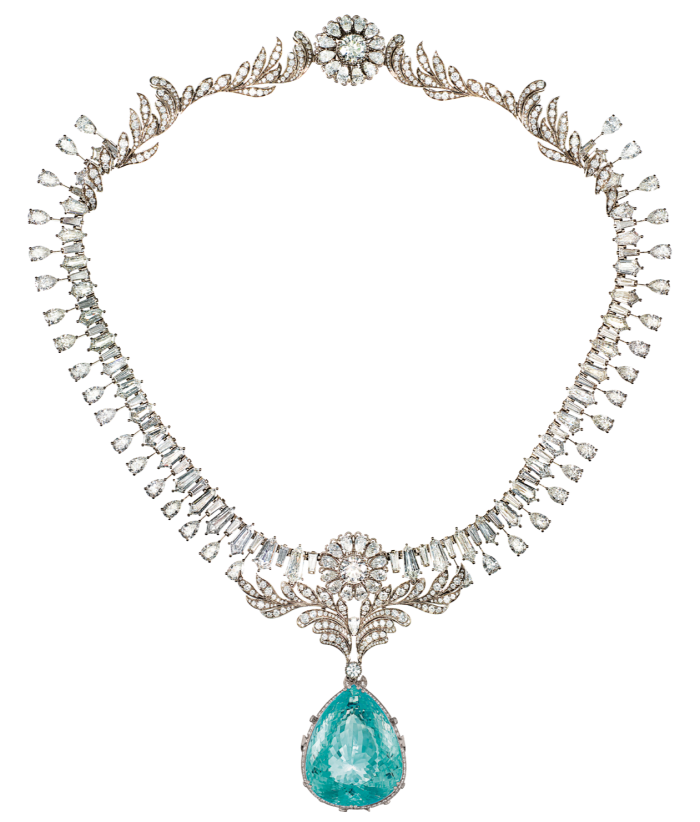
In his book Tiepolo Pink, Milanese writer and publisher Roberto Calasso describes “the last breath of happiness in Europe” before the 18th-century paradise of frivolity ended. So how does this haze of pink jewels fit into our world of austerity? Are they too disconnected from modern life? Undoubtedly they are things of joy, and they provoke a heart-lurching emotional response in the same manner as a painting or sculpture. There’s also the significance of a jewellery oeuvre that offers protection to dying heritage skills – take the artisans in the fishing village of Torre del Greco, the centre of coral engraving since the 15th century, commissioned by Dolce & Gabbana so they can teach the next generation. They are also providing vital support to the art practised by a handful of eagle-eyed “miniature” painters and the fillegrane experts deftly twisting tiny beads and hair’s‑breadth threads of gold.
Tiepolo himself was an exponent of the art of sprezzatura, the ability of an artist to hide their toil, passing it off as something effortless. The accumulation of difficult components and non-stop work to produce the sumptuously wrought Tiepolo Pink jewels will be illusory when they exit the stage of La Scala, the unofficial winter home of the Alta Moda show – the realisation of “the designers’” original dream (give or take a few alterations). And Veneruz will go home to sleep before new sketches arrive and the impossibility of next season’s alchemy begins.
Comments